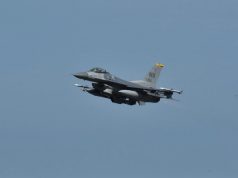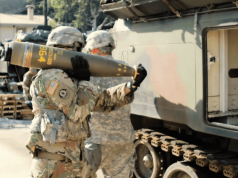The US defense department’s annual report on China’s military power has identified three areas in which the People’s Liberation Army (PLA) is already ahead of the US as the country steadily progresses towards becoming a “world-class” military by 2049.
These three areas include naval shipbuilding, land-based conventional ballistic and cruise missiles, and integrated air defense systems.
According to Pentagon, China has the largest navy in the world, with an overall battle force of approximately 350 ships and submarines including over 130 major surface combatants. In comparison, the US Navy’s battle force is approximately 293 ships as of early 2020.
The report recognizes PLA Navy as an increasingly modern and flexible force that has focused on replacing previous generations of platforms with limited capabilities in favor of larger, modern multi-role combatants. The PLAN is now largely composed of modern multi-role platforms featuring advanced anti-ship, anti-air, and anti-submarine weapons and sensors.
What is more, the naval service remains engaged in a robust shipbuilding and modernization program that includes submarines, surface combatants, amphibious warfare ships, aircraft carriers, and auxiliary ships as well as developing and fielding advanced weapons, sensors, and command and control capabilities. As an illustration of the shipbuilding pace, China’s naval shipbuilders are said to have launched 8 advanced Type 055 destroyers (currently the world’s largest surface combatant with a displacement of around 13,000 tons) and 13 Type 052D destroyers over the past three years.
China also has more than 1,250 ground-launched ballistic missiles (GLBMs) and ground-launched cruise missiles (GLCMs) with ranges between 500 and 5,500 kilometers. The United States currently fields one type of conventional GLBM with a range of 70 to 300 kilometers and no GLCMs.
The Pentagon also assesses that China’s nuclear warhead stockpile will “at least double in size”, as the country is pursuing a “nuclear triad” with the development of a nuclear capable air-launched ballistic missile (ALBM) and improving its ground and sea-based nuclear capabilities.
China’s embrace of artificial intelligence
In 2017, China’s General Secretary Xi Jinping said the PLA’s objective was to become a “world-class” military by the end of 2049. This plan will require China to modernize its military in every aspect. This is something the country is already doing, according to the report, as PLA sees emerging technologies as driving a shift to “intelligentized” warfare from today’s “informatized” way of war.
As observed by the Pentagon, PLA strategists broadly describe intelligentized warfare as the operationalization of artificial intelligence (AI) and its enabling technologies, such as cloud computing, big data analytics, quantum information, and unmanned systems, for military applications. These technologies, according to PRC leaders, represent a “revolution in military affairs” for which China must undertake a whole-of-government approach to secure critical economic and military advantages against advanced militaries.
China seeks to lead the shift to “intelligentized warfare” through its military-civil fusion (MCF) development strategy and by reforming both its research and development (R&D) as well as strategy and doctrine organizations. In 2017, the PLA reorganized its military research and education institutes to synchronize advances in emerging technologies with the development of new operational concepts. As outlined in the report, the PLA argues that the implementation of “intelligentized” capabilities will increase the speed of future combat, necessitating more rapid processing and fusing of information to support quick and efficient command decision making.
Just like the US, China is pursuing new technologies like AI to support future military capabilities, such as autonomous command and control (C2) systems, more sophisticated and predictive operational planning, and intelligence, surveillance, and reconnaissance (ISR) fusion. In addition, the PLA is developing more capable command information systems and decision aids for battlefield commanders. Future command, control, communications, computers, intelligence, surveillance, and reconnaissance (C4ISR) systems will seek to use AI to collect, fuse, and transmit big data for more effective battlespace management and to generate optimal courses of action.
The PLA also intends to improve its cyber and electronic warfare (EW) capabilities through AI-assisted network vulnerability analysis, countermeasure identification, and electromagnetic spectrum management.



























